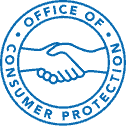Restaurant Food Deliver Apps: What you should know
Did you ever wonder how much of the money you pay for your dinner delivery through a third-party app goes to the app, the driver or the restaurant? That is the topic of a new study by Washington Consumers’ Checkbook titled Food Fight! Online Ordering Services Charge Restaurants Huge Fees . While Takout Taxi was the original third-party delivery service, many new app-centric competitors have entered the market. Now names like Bite Squad, Door Dash, GrubHub, UberEats and others are commonly used by consumers to have meals delivered—especially for those interested in contactless dining options at home. Consumers who sign up for these apps often get coupons for free delivery or some amount off of the final check. On the receipt, delivery fees may be disclosed as only a few dollars, but while that’s how much you’re paying, is that really all the app is receiving? The answer is no.
Food delivery apps charge restaurants delivery between 20-40% and commissions between 15-30%. And if the restaurant agrees to higher commissions, they’ll be placed higher on the apps search results. The apps also have designated phone numbers where you think you’re calling the restaurant directly but you’re really calling the delivery company. Restaurants pay the commission on these calls too. The apps extensively advertise online and when searching for your restaurant, you may see an attractive “Order Delivery” button or claims that an app is the exclusive delivery option, and the search steers you away from your restaurant’s actual website to the app’s website.
Checkbook’s article takes illustrative examples one which shows a restaurant paying an app $666 in commission, delivery charges, processing fees, promotions and adjustments on 46 orders totaling $1,043. This means that on those 46 orders, the restaurant only made $377 from which it had to pay vendors for supplies and staff to prepare the meals. Yet the app made 64% for merely acting as a booking agent.
As consumers, you need to know the true cost of your order. Washington Consumers’ Checkbook suggests ordering directly from the restaurant and using the restaurant’s phone number. This would require extra diligence to make sure you are not misdirected to an app-hosted page. Ask questions about the fee and commission structure and choose the app that is least expensive to you and to the restaurant.
Legal Landscape
Nationwide you will find laws, executive orders, ordinances, rules and requests where governments are trying to rein in these fees and practices to aid the local restaurant industry while providing disclosures to consumers. Some examples of such laws include:-
Limited to public health emergencies
- Anne Arundel County, MD: Executive Order caps fees charged to restaurants at 15%, forbids reducing pay to driver to make up the lost revenue from compliance.
- District of Columbia: Law caps commissions at 15%, requires registration, forbids reducing pay to driver to make up the lost revenue from compliance, disclosure to consumers of fees structure.
- New Jersey: Law limits third-party delivery fees at 20%
- Baltimore, MD: Letter request by Mayor to cap fees charged to 15%.
- Berkley, CA: Ordinance caps delivery fees at 20%, other fees to 5%, prevents shifting cost of compliance, 100% of tips go to the driver, and mandates disclosures to consumers of fees structure.
- Denver, CO: Ordinance caps fees at 15% and prevents shifting cost of compliance to driver
- Jersey City, NY: Mayoral Executive Order caps fees at 10%
- Los Angeles, CA: Emergency Ordinance to cap fees to 15%
- New York City: One bill prohibits charging restaurants for telephone initiated orders which did not result in an actual transaction. The second bill capped commissions at 15% per order for deliver, and 5% for other services.
- Oakland, CA: Emergency ordinance caps fees at 15%.
- Portland, OR: Ordinance places 10% cap on fees
- Rockville, MD: Letter request by City Council to cap fees at 15%, forward 100% of tips to drivers and restaurants
- San Francisco, CA: Mayoral Order temporarily caps commissions at 15%
- Santa Clara, CA: Ordinance caps fees at 15%, prevents shifting cost of compliance to drivers, and 100% of tips go to the driver
- Santa Cruz, CA: Emergency Declaration caps fees at 10%
- Seattle, WA: Emergency Order mandates 100% of tips go to the driver.
-
General application
- Chicago, IL: Rule requiring disclosure of pricing structure to consumer and restaurant prior to purchase and on receipt.
- Philadelphia, PA: Law requires consumer disclosures and caps total fees at 15%, delivery commissions at 10% and other fees at 5%.
OCP Press Release: English Spanish
